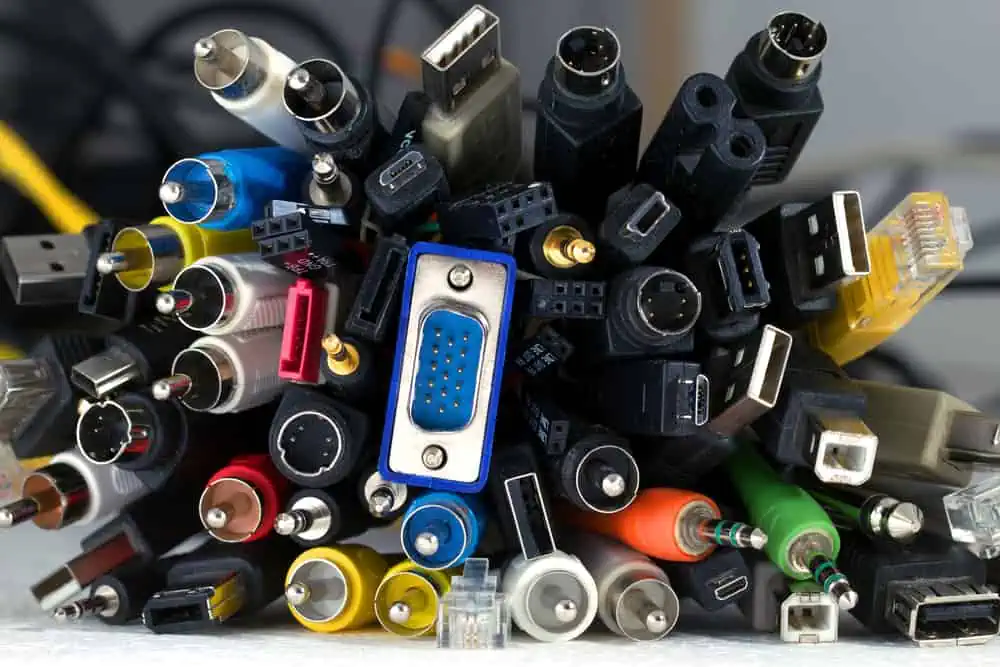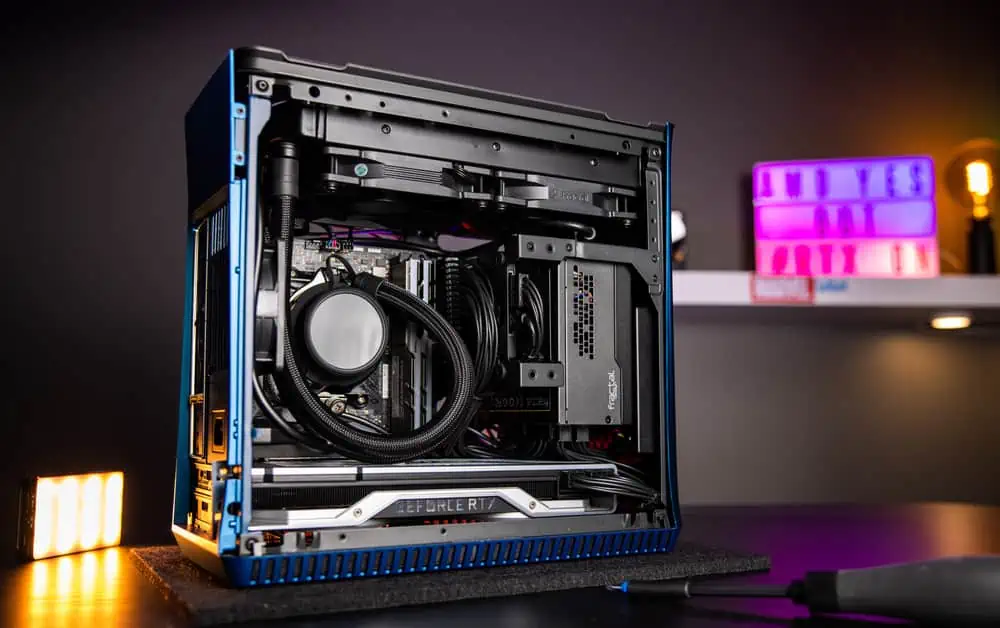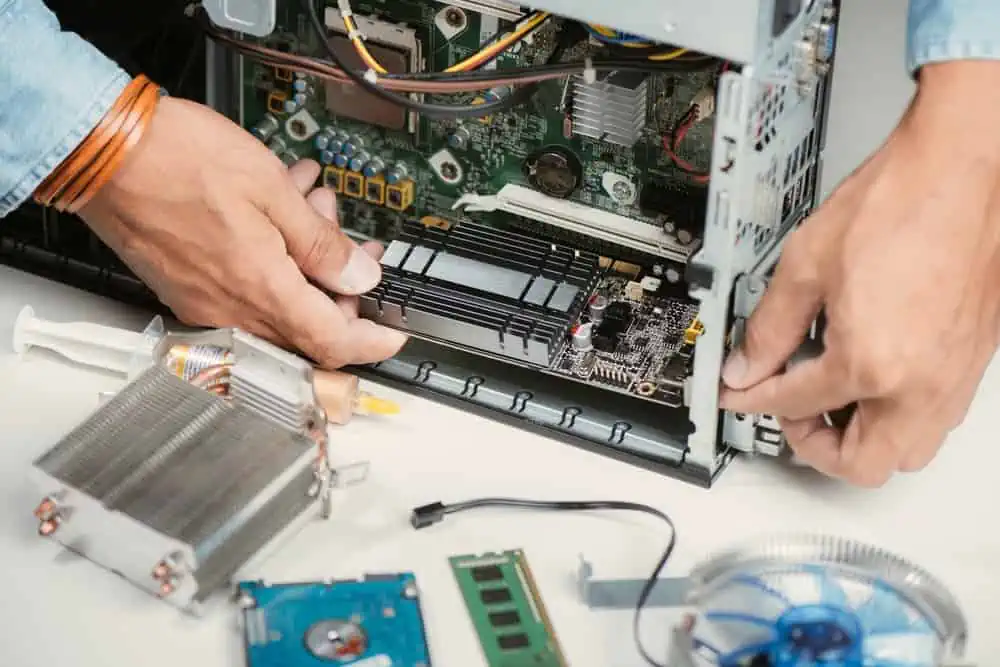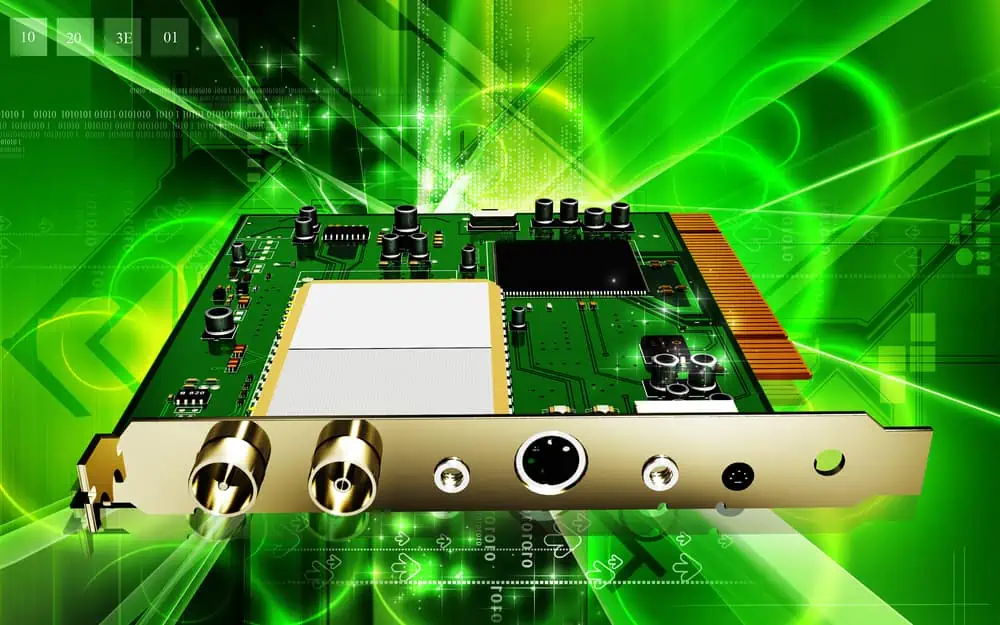Are you curious to find out what type of memory DRAM is? Today is your lucky day, as this article thoroughly explains this memory type.
Overview
To start with, DRAM is also known as Dynamic Random-Access Memory or Dynamic RAM. Furthermore, it is a type of computer memory (RAM) widely used in modern electronic devices.
It is a volatile memory technology that stores data temporarily while the computer is powered on. This allows the computer’s processor to quickly access needed data in order to offer a faster output, similar to other RAM types.
The history of DRAM trace back several decades, and it has been key in the progress of computer technology and RAM. The concept of RAM occurred in the 1940s with the development of early computers.
Originally, computers used several forms of non-volatile memory, such as delay line memory and magnetic core memory. However, these forms of non-volatile memory were slow and less efficient.
Hence, the need for faster and more accessible memory led to the development of Dynamic RAM. The first practical implementation of DRAM was in the late 1960s by Robert Dennard and a team of engineers at IBM.
They had the idea of using a capacitor and transistor to store binary data as electrical charges. Therefore, allowing for rapid read and write operations.
So, in 1970, that idea led to the development of the 1 kilobit (Kb) DRAM, which marked the beginning of the DRAM era. Thus, throughout the 1970s and 1980s, Dynamic RAM technology rapidly evolved.
However, despite the technology’s advancements, it remained relatively expensive and had limited capabilities compared to other memory types. Nonetheless, Dynamic RAM is less expensive today and continues to be a critical component in modern computers.
Features of DRAM
Now that we know what Dynamic RAM is, this section will discuss some of its major attributes.
It Has Several Types
Dynamic RAM has several variations, each designed to cater to specific needs and optimize performance in various applications. Moreover, these variations differ in architecture, speed, power consumption, and compatibility.
The major types of Dynamic RAM include SDRAM (Synchronous DRAM), DDR SDRAM (Double Data Rate SDRAM), and GDDR (Graphics Double Data Rate). That’s not all; it also includes ECC (Error correction code) DRAM.
- SDRAM (Synchronous DRAM): SDRAM synchronizes data transfers with the computer’s clock speed, thus; enhancing performance. Moreover, this type of Dynamic RAM was widely used in desktop computers and helped improve overall system performance.
- DDR SDRAM (Double Data Rate SDRAM): DDR SDRAM has the same features as the SDRAM but offers double the data transfer rate. Hence, it provides higher bandwidth and improved memory performance.
Besides, DDR SDRAM is mostly used in devices today and has undergone several iterations. These iterations include DDR2, DDR3, DDR4, and DDR5, with each offering increased data transfer rates and lower power consumption. - GDDR (Graphics Double Data Rate): GDDR is a type of Dynamic RAM specifically designed for graphics processing units (GPUs). It provides exceptional bandwidth and optimized performance, specifically for rendering high-quality graphics in gaming consoles, graphics cards, and other applications that require high graphical performance.
- ECC (Error Correction Code) DRAM: This type of Dynamic RAM can find corrupted data and sometimes even fix it.
This is due to its error-correcting code.
Various types of DRAM cater to specific needs related to performance, power consumption, and size. These variations enable Dynamic RAM to be tailored for diverse applications, such as desktops, servers, mobile devices, and graphics-intensive computers.
Hence, by offering various types of Dynamic RAM, manufacturers can cater to several computing needs and provide memory solutions that best suit specific use cases.
Offers Several Capacities
Another notable feature of Dynamic RAM is its ability to offer a wide range of capacities. Therefore, allowing for flexibility in meeting different memory requirements.
In case you’re wondering, DRAM capacity is the amount of data that can be stored in the memory module. Over the years, the capacity of DRAM has undergone significant improvements.
Thus, leading to the ability of computers and electronic devices to handle more complex and larger tasks. Besides, Dynamic RAM capacity ranges from a couple of megabytes to several terabytes, depending on your budget and use case.
Dynamic Power Consumption
As its name suggests, Dynamic RAM consumes dynamic power. This means its power consumption varies based on the activity level.
Basically, when data is read or written, power consumption increases. Meanwhile, power consumption decreases when the memory is idle or in a low-power state.
This dynamic power consumption behavior helps optimize energy efficiency in computers using this type of RAM.
Refresh Operation
DRAM is called dynamic because it needs to be refreshed periodically to maintain stored data. This is because the capacitors that store the data slowly lose their charge over time.
Hence, the refresh operation involves reading and restoring the charge in each memory cell to ensure the data remains intact. By the way, the memory controller automatically performs this periodic refresh operation.
Overclocking Capabilities
Dynamic RAM often offers overclocking capabilities, meaning it can operate at frequencies higher than the standard specifications. This allows users to push the memory beyond its default speed.
Therefore, providing potential performance gains. However, overclocking may require thorough configuration and monitoring to ensure stability and avoid data corruption or system instability.
Strengths of DRAMs
Compatible with Various Interfaces
Dynamic Random-Access Memory is compatible with several computer architectures and interfaces.
Therefore, it is widely adopted in a broad range of devices. It can be used in desktop computers, laptops, servers, mobile devices, gaming consoles, and other electronic systems.
It Has Several Manufacturers
Having several manufacturers of Dynamic RAM increases its availability and competition in the market.
The presence of multiple manufacturers ensures a steady and abundant supply of DRAM. Also, the competition among DRAM manufacturers drives pricing competitiveness.
Hence, consumers have the option to purchase the memory from different manufacturers at several price points.
Scalability
Dynamic RAM offers scalability, allowing computers to expand their memory capacity easily.
Additional DRAM sticks can be added to a computer’s available RAM slot to increase its overall memory capacity. Therefore, providing a cost-efficient way to accommodate growing memory requirements and improve performance.
Easy to Install
DRAM sticks offer plug-and-play functionality.
This means you can easily install them on a computer by inserting them in a compatible slot on a computer.
Offers Impressive Speed
Compared to most RAM types, Dynamic RAM is faster, allowing for quicker data retrieval.
This can be credited to its architecture, which enables direct access to individual memory cells. Besides, Dynamic Random-Access Memory comes at different speeds, depending on the version and type.
Weaknesses of DRAM
Vulnerable to Physical Shocks and Vibrations
Dynamic RAM consists of fragile components and semiconductor materials.
Therefore, physical shocks, vibrations, or external interference can cause its components to move or shift. Therefore, potentially leading to data corruption.
It is Volatile (Requires Power to Retain Data)
DRAM is a volatile memory, meaning it requires a constant power supply to retain data.
Thus, when a device with DRAM is turned off, all data stored in the memory is lost.
Power Consumption
Due to its constant refresh operations, Dynamic RAM consumes more power.
This can be a significant concern for mobile devices and energy-conscious users.
Prone to Errors
Dynamic RAM is more prone to errors because of its refresh cycle.
This can be a problem for applications that demand high reliability, such as servers.
Frequently Asked Questions
Yes, mobile devices commonly use Dynamic RAM for fast data access and multitasking capabilities.
Dynamic Random-Access Memory is the full form of DRAM.
Yes, as with any other RAM type, DRAM is volatile. This means it needs constant power to retain data.
Yes, it is. Overclocking Dynamic RAM involves running it at a higher frequency than its default specification.
While this can provide performance gains, it has instability and potential data corruption risks.
Dynamic Random-Access Memory was developed by a team of engineers at IBM led by Robert Dennard.
Conclusion
Dynamic Random-Access Memory is a fundamental and essential component in modern devices. Its ability to quickly retrieve temporal data makes it crucial in ensuring efficient and responsive system performance.
This translates to enhanced multitasking capabilities and efficient handling of bandwidth-intensive tasks. Besides, this memory’s diverse capacities and types offer flexibility in meeting the requirements of different devices.
Moreover, the availability of multiple manufacturers contributes to a competitive market. Therefore, providing several options for consumers regarding price, performance, and reliability.
However, it is essential to acknowledge certain drawbacks associated with Dynamic RAM, such as its volatility and high power consumption. Nonetheless, Dynamic RAM remains ideal for most devices today due to its speed and widespread compatibility.
I hope you found this article helpful. We value your feedback and would love to know your thoughts, comments, and questions.
Use the “Leave a Reply” form at the bottom of this page to express your thoughts or ask questions.
You could also use the “Was this page helpful?” buttons below to give us your feedback.
If you’re interested in exploring more informative articles like this, visit our Technology Explained page.



